Occupational Safety Training for Ukulele Manufacturing
99,000 ₫
Note: The above price is calculated per person and may vary depending on the number of trainees participating in the course and market fluctuations. For more accurate pricing support, please refer to the price list or contact our consultants directly.
Occupational safety is an important issue in ukulele manufacturing plants and needs to be addressed promptly to ensure the health and safety of workers and enhance the reputation of businesses. The Occupational Safety Training course is one of the most effective solutions to raise awareness of accident prevention for workers involved in ukulele manufacturing.
Table of Contents
Toggle1. Overview of the Ukulele
a. What is a Ukulele?
The ukulele is a string instrument originating from Hawaii. It has a compact shape and typically has 4 strings, although 6-string or 8-string versions also exist. The ukulele is made of wood and produces a gentle, pleasant sound, popular across many music genres, from folk to pop.
Main characteristics of the Ukulele:
- Size and Shape:
- Soprano: The smallest size, with a gentle sound and a high pitch range.
- Concert: Slightly larger than the soprano, producing a fuller sound and easier to play for people with larger hands.
- Tenor: Even larger, providing a deeper and clearer sound, often favored by professional musicians.
- Baritone: The largest ukulele size, with a sound similar to a guitar.
- Strings and Tuning:
- The ukulele usually has 4 strings tuned to different notes, commonly G-C-E-A. This creates a recognizable sound suitable for many music styles.
- History and Origin:
- The ukulele originates from Portugal, where musicians brought the Machete instrument to Hawaii in the late 19th century. In Hawaii, this instrument was developed and refined into the ukulele we know today.
- Playing the Ukulele:
- The ukulele is considered easier to learn compared to many other string instruments like the guitar, thanks to its small size and fewer strings. This makes it a popular choice for beginners.
- Applications:
- The ukulele is used in many music genres, from folk and pop to jazz and classical. Its sound is often described as cheerful and optimistic, making it an ideal instrument for creating a light and relaxing atmosphere.

b. Types of Machinery Used in Ukulele Production
1. Cutting Machines
- Bandsaw: Used to cut wood panels into the basic shapes of parts such as the front, back, and sides of the ukulele.
- Table Saw: Commonly used for more precise cuts of smaller wood pieces.
2. Turning Machines
- Wood Lathe: Used to turn parts such as the headstock and round components of the ukulele, creating precise and smooth shapes.
3. Drilling Machines
- Drill Press: Used to drill holes needed for tuning pegs, defects, or other accessories on the ukulele body.
4. Sanding Machines
- Belt Sander: Used to smooth wood surfaces and shape detailed parts of the ukulele.
- Disc Sander: Used for finer sanding tasks.
5. Planing Machines
- Wood Planer: Used to flatten and even out wood surfaces and to achieve uniform thickness on parts of the ukulele.
6. Assembly Machines
- Automatic Assembly Machines: In large production facilities, automated machines can assemble ukulele parts quickly and accurately.
7. Spraying Machines
- Automatic Spraying Machines: Used to apply paint or finish coats smoothly. Spraying machines ensure an even and high-quality finish.
8. Measuring and Testing Machines
- Precision Measuring Tools: Used to inspect and ensure the ukulele dimensions meet quality standards.
- Sound Testing Machines: Used to check the sound quality of the ukulele after assembly.
9. Polishing Machines
- Automatic Polishing Machines: Used to polish and finish the ukulele surface, creating a shiny and smooth appearance.
10. Laser Cutting Machines
- Laser Cutter: Used to cut or engrave small details, patterns, or logos on the ukulele surface with high precision.

c. Famous Ukulele Brands
1. Kamaka
- Origin: Hawaii, USA.
- Notable features: Kamaka is known as one of the oldest and most prestigious ukulele manufacturers. The brand stands out for its use of premium wood and excellent craftsmanship. Kamaka ukuleles often have clear sound and high durability.
2. KoAloha
- Origin: Hawaii, USA.
- Notable features: KoAloha is famous for innovative ukulele designs and superior sound quality. They use proprietary manufacturing technology and special wood materials to create instruments with rich and powerful sounds.
3. Kanile’a
- Origin: Hawaii, USA.
- Notable features: Kanile’a is a brand known for blending tradition and innovation in ukulele production. They use rare woods and sophisticated processes to create instruments with warm tones and high quality.
4. Lanikai
- Origin: USA.
- Notable features: Lanikai offers affordable ukuleles that still maintain good quality. This brand is known for products suitable for beginners as well as experienced players.
5. Cordoba
- Origin: Spain.
- Notable features: Cordoba is known for producing both ukuleles and guitars. They offer a variety of ukuleles with good quality and attractive designs, suitable for both beginners and professional musicians.
6. Ohana
- Origin: USA.
- Notable features: Ohana is a brand known for providing reasonably priced ukuleles with good quality. They focus on producing rich sound and easy playability, suitable for many users.
7. Makala
- Origin: USA.
- Notable features: Makala is a product line of the Kala brand, offering affordable ukuleles. It is a popular choice for beginners and budget-conscious players.
8. Kala
- Origin: USA.
- Notable features: Kala is one of the globally renowned ukulele brands. They offer a range of products from low-cost models to premium ones, known for beautiful design and quality sound.
9. Guitar Center
- Origin: USA.
- Notable features: Guitar Center is not a ukulele manufacturer but a major retailer offering many famous ukulele brands. They provide a wide selection to help consumers find suitable products.
10. Flight
- Origin: Slovenia.
- Notable features: Flight stands out for producing high-quality ukuleles with creative designs and diverse styles. They offer many options for different levels from beginners to professionals.

d. Specific Jobs in the Ukulele Manufacturing Factory
Group 1
- CEO, deputy CEO, and department heads in the ukulele manufacturing factory.
Group 2
- Safety officers: manage safety in the factory, design safety procedures, supervise and enforce employees to follow safe work processes.
Group 3
- Wood Cutting: Using bandsaws or table saws to cut wood panels into basic parts like the front, back, and sides of the ukulele.
- Detail Turning: Using lathes to shape round parts or contours of the ukulele, such as the headstock and decorative details.
- Drilling Holes: Using drills to make holes for tuning pegs, accessories, and defects on the body.
- Shaping: Adjusting parts to ensure all components fit together precisely.
- Sanding: Using belt sanders and disc sanders to smooth wood surfaces and shape small details.
- Planing Wood: Using planers to flatten and even out wood surfaces and to achieve uniform thickness on parts.
- Assembling Parts: Joining the front, back, sides, and neck together.
- Attaching Accessories: Installing tuning pegs, frets, and adjustment knobs.
- Fitting Inspection: Ensuring all parts fit precisely with no gaps or structural issues.
- Spraying Paint: Using automatic spraying machines to apply primer, color coats, and finishes to protect and beautify the ukulele.
- Polishing: Using polishing machines to make the surface smooth and glossy.
Group 4
- Office jobs, support, sales, marketing.
- Production management, quality control, human resource management, materials management, financial accounting management.
- Research and development of new products, product design, and packaging.
2. Overview of the Ukulele Manufacturing Occupational Safety Training Course
Within the scope of this article, we focus on issues surrounding Group 3, because Group 3 consists of workers directly involved in the manufacturing process, facing the highest occupational safety risks. For reference to other groups, see here.
a. What is Group 3 Occupational Safety Training?
- Group 3 Occupational Safety Training consists of sessions that equip workers with awareness on how to prevent occupational accidents.
- The safety training course helps workers identify and avoid hazards, reducing risks of occupational accidents during work.
REGISTER FOR OCCUPATIONAL SAFETY TRAINING SERVICE
b. Training Duration
Initial safety training duration
- The total training time is at least 24 hours, including examination time.
- 8 hours of theory on policies and laws regarding occupational safety and hygiene
- 8 hours of theory on basic knowledge of occupational safety and hygiene
- 4 hours of theory on specialized training content
- 2 hours of practical training on specialized content
- 2 hours for theoretical examination at the end of the training course
The safety training center will divide the time into multiple sessions depending on the worker’s schedule. Typically, there are 6 training sessions over 3 days, provided the manufacturing enterprise arranges continuous training time.
Periodic safety training duration
- Before the occupational safety card expires, workers who wish to renew must undergo periodic occupational safety training with a training duration of at least 50% of the initial safety training duration.
Explanation: The total duration of periodic occupational safety training is at least 12 hours, including examination time. After completing the periodic training and passing the test, workers will be reissued or have their occupational safety card extended.
c. Training Course Content
| No. | TRAINING CONTENT | TRAINING DURATION (HOURS) | |||
| Total | Including | ||||
| Theory | Practice | Examination | |||
| I | System of policies and laws on occupational safety and hygiene | 8 | 8 | 0 | 0 |
| 1 | Overview of the system of legal documents on occupational safety and hygiene. | 6 | 6 | ||
| 2 | System of standards and technical regulations on occupational safety and hygiene. | 1 | 1 | ||
| 3 | Specific regulations of state management agencies on occupational safety and hygiene when constructing, expanding, or renovating facilities for production, use, preservation, storage, and inspection of machinery, equipment, materials, and substances with strict safety and hygiene requirements. | 1 | 1 | ||
| II | Basic knowledge of occupational safety and hygiene | 8 | 8 | 0 | 0 |
| 1 | Basic knowledge about hazardous and harmful factors in the workplace. | 4 | 4 | ||
| 2 | Methods to improve working conditions. | 1 | 1 | ||
| 3 | Safety culture in production and business. | 1 | 1 | ||
| 4 | Rights and obligations of employers and employees; policies and regimes on occupational safety and hygiene for workers; functions and duties of safety and hygiene networks and staff. | 1 | 1 | ||
| 5 | Safety and hygiene regulations, safety and hygiene signs and instructions, use of safety equipment and personal protective equipment; first aid skills for occupational accidents and prevention of occupational diseases. | 1 | 1 | ||
| III | Specialized training content | 6 | 4 | 2 | 0 |
| Comprehensive knowledge of types of machinery, equipment, hazardous substances; risk analysis, evaluation, and management of occupational safety and hygiene; safe working procedures with machinery, equipment, and substances requiring strict safety and hygiene. | 6 | 4 | 2 | ||
| IV | Final safety training content examination | 2 | 2 | 0 | 0 |
| Total | 24 | 22 | 2 | ||
See more training content of all 6 groups
d. Occupational Safety Card
After completing the occupational safety training course and passing the exam, workers will be issued an occupational safety card (commonly known as the occupational safety certificate for Group 3).
The Group 3 safety card clearly displays information such as full name, date of birth, specific job and working environment, training duration, official red stamp, and signature confirming course completion.
According to the regulations on card issuance specified in Clause 2 of Article 24 of Decree 44/2016/ND-CP, there are two cases:
- If the employer and employee have a labor contract, the employer must sign, stamp, and countersign the safety card for Group 3 workers after they complete the training course from an occupational safety training unit and pass the exam.
- If the worker is a freelance or temporary worker without a labor contract, the training unit must sign, stamp, and countersign the safety card for the worker after they complete the occupational safety training and pass the exam.

3. Identifying Hazards Affecting Workers in Ukulele Manufacturing
Risks from Machinery and Equipment
- Risk of injury from machinery: Saws, lathes, drills, and sanding machines all have fast-moving parts that can cause serious injuries if not used properly.
- Preventive measures: Ensure workers are fully trained on machine operation, always use personal protective equipment (such as gloves, safety goggles), and maintain machines in good condition.
- Risk of entrapment or entanglement: Machinery can trap or pull in materials, causing injury to workers.
- Preventive measures: Use safety devices such as machine guards and emergency stop systems, and perform regular inspections and maintenance of machinery.
Risks from Materials and Chemicals
- Risk from wood dust: Sanding and cutting wood generate dust that can cause respiratory problems and lung diseases.
- Preventive measures: Use proper ventilation and dust collection systems, and provide respiratory masks to workers.
- Risk from paints and chemicals: Use of paints, solvents, and finishing chemicals can cause skin irritation, respiratory issues, or long-term health problems.
- Preventive measures: Use less toxic alternatives, ensure good ventilation in work areas, and provide personal protective equipment such as gloves and masks.
Risks from Posture and Muscles
- Risk from improper working posture: Workers may experience back, neck, shoulder pain, and muscle issues due to incorrect posture or prolonged work without breaks.
- Preventive measures: Train workers on correct posture, provide ergonomic support such as ergonomic chairs, and encourage regular breaks and posture changes.
- Risk from manual force: Handling heavy objects or performing tasks requiring high manual force can cause muscle or joint injuries.
- Preventive measures: Use lifting and support equipment, train safe lifting techniques, and encourage teamwork to reduce mechanical load.
Environmental Risks
- Risk from noise: Machinery and equipment in the factory can produce high noise levels, causing hearing damage.
- Preventive measures: Use hearing protection devices and design soundproofing systems in work areas.
- Risk from insufficient lighting: Poor lighting can increase accident risks and reduce work efficiency.
- Preventive measures: Provide adequate and uniform lighting in the workspace, and conduct regular lighting system inspections.
Risks from Emergency Situations
- Risk from fire: Use of flammable chemicals and electrical equipment can cause fire hazards.
- Preventive measures: Provide firefighting equipment, implement fire safety procedures, and train workers on emergency response.
- Risk from electrical accidents: Improper use or faulty electrical equipment can cause electric shocks.
- Preventive measures: Ensure proper installation and maintenance of electrical equipment, and train workers on electrical safety.
Risks from Assembly and Finishing Processes
- Risk from handling small parts: Small parts like wire pins can pose eye or skin hazards.
- Preventive measures: Use eye and skin protection equipment, and handle small parts carefully.
- Risk from assembly: Assembling parts requires precision and care, and using tools may present health risks.
- Preventive measures: Provide full training on assembly techniques and supply high-quality tools to reduce accident risks.

4. Safety Measures When Participating in Ukulele Production
Training and Awareness
- Comprehensive training: Provide occupational safety training for all new employees and periodically for all staff. Training should include machine operation, material handling, and emergency response procedures.
- Safety awareness: Encourage workers to raise awareness of hazards and safety rules through notice boards, instructional materials, and regular meetings.
Use and Maintenance of Machinery
- Proper use: Ensure all machinery and equipment are used according to the manufacturer’s instructions. Employees should be trained on safe machine operation.
- Regular maintenance: Perform regular maintenance and inspections on machines and equipment to ensure proper functioning and avoid malfunction risks.
- Protective devices: Use machine guards such as protective shields and install emergency stop systems to protect workers from machine-related hazards.
Use of Personal Protective Equipment (PPE)
- Safety glasses: Wear safety glasses to protect eyes from wood dust, debris, and other hazardous materials.
- Gloves: Use protective gloves to guard against cuts, abrasions, and chemicals.
- Masks: Wear masks or respiratory protection when working with wood dust or toxic chemicals.
- Hearing protection: Use earplugs or earmuffs to reduce noise exposure from machinery.
Material and Chemical Management
- Wood dust management: Use good ventilation systems and dust collection devices to minimize airborne wood dust. Ensure regular cleaning of the work area.
- Chemical handling: Store hazardous chemicals in well-ventilated areas and use less toxic alternatives if possible. Provide PPE such as gloves and masks when working with paints and solvents.
Ensuring Posture and Muscle Safety
- Working posture: Ensure workers maintain correct posture to reduce the risk of muscle and joint injuries. Use ergonomic chairs and support devices as needed.
- Safe lifting techniques: Train employees on safe lifting and material handling techniques to prevent mechanical injuries. Use lifting equipment and aids when necessary.
Workplace Safety Environment
- Adequate lighting: Ensure the work area is well-lit to reduce accident risks caused by poor visibility.
- Good ventilation: Ensure proper ventilation to minimize dust and harmful gas accumulation.
- Periodically conduct occupational environment monitoring in factories to collect and analyze harmful factors affecting workers, thereby adjusting and reducing hazards to prevent occupational diseases.
Emergency Handling
- Emergency plans: Establish emergency response plans for incidents such as fire, electric shock, or workplace accidents. Ensure employees know the emergency procedures.
- Firefighting equipment: Provide and maintain firefighting equipment and train employees on how to use it.
Inspection and Supervision
- Safety inspections: Conduct regular safety checks to identify and eliminate potential hazards in the production area.
- Work supervision: Monitor work processes to ensure safety measures are fully implemented and promptly address violations.
Waste Management
- Waste disposal: Handle production waste safely and efficiently, including wood dust, chemical waste, and other materials.
- Waste storage: Store hazardous waste in designated containers clearly labeled.
5. Benefits of Occupational Safety Training for Ukulele Production
An Toàn Nam Việt offers your company the following excellent benefits after completing occupational safety training courses according to the regulations in Decree 44/2016/ND-CP on Occupational Safety and Hygiene for companies, factories, and enterprises.
- Workers can identify potential occupational accident hazards and take preventive measures to avoid accidents.
- Your business can establish risk prevention measures in production, operation, and maintenance processes.
- Reduce costs related to occupational safety risks.
- Uninterrupted production increases labor productivity and product quality.
- Compliance with labor safety laws to avoid legal risks.
- Build credibility and professionalism in all aspects, thereby elevating your business brand.
Nam Việt’s training courses are the solution to prevent and combat external risk factors affecting individuals so they can avoid dangers that may lead to injuries or worse, fatalities.
REGISTER FOR OCCUPATIONAL SAFETY TRAINING SERVICE
6. Customer Feedback After Completing Ukulele Production Safety Training
An Toàn Nam Việt has years of experience accompanying many enterprises across Vietnam, especially in the southern provinces. This responsibility is very precious to Nam Việt, so the Occupational Safety Training work is increasingly professional. The motivation for An Toàn Nam Việt’s growth comes from positive feedback and suggestions from enterprises. Below are feedback from our valued partners we have served.
Bac Nam E&C Investment Construction Joint Stock Company
“The first time using the service at An Toàn Nam Việt, I was very surprised by the 24/7 enthusiastic support from the consulting team. The class organization was fast and convenient for our company. Thank you very much for Nam Viet’s service!”
Hoa Dat Construction and Trading Joint Stock Company
“Nam Viet’s service helped us greatly simplify occupational safety and complete safety documentation for the work process. The consulting team was enthusiastic and timely in answering our questions. 5 stars for Nam Viet.”
See more customer interviews after using An Toàn Nam Việt’s services
7. Occupational Safety Training Capacity of An Toàn Nam Việt
An Toàn Nam Việt is a reputable and quality occupational safety training center in Vietnam today. Training sessions are continuously held at factories, workshops, and construction sites nationwide (all 63 provinces).
REGISTER FOR OCCUPATIONAL SAFETY TRAINING SERVICE
Occupational safety training license
- An Toàn Nam Việt has been inspected and certified by the Department of Safety under the Ministry of Labor, Invalids and Social Affairs as meeting the requirements for occupational safety and hygiene training operation. This further strengthens our training capacity.

Materials and Lectures
- Before being used in occupational safety training courses, training materials are reviewed and approved to ensure accuracy and effectiveness.
- Our instructors use teaching methods standardized by An Toàn Nam Việt, based on expert research on occupational safety and hygiene training to maximize knowledge absorption.
Facilities
- Controlling classroom conditions enhances teaching performance and learners’ knowledge uptake.
- Our training facility always provides spacious classrooms that meet standards in area, lighting, training equipment, etc.
8. Nationwide Reputable and Quality Safety Training Center
At An Toàn Nam Việt, we always prioritize occupational safety training with dedication. For us, imparting self-protection knowledge to workers so they can carry safety with them on their livelihood journey contributes to nation-building.
To ensure effective training, we carefully prepare every detail, from tools, teaching equipment to curricula, materials, sound, and lighting.
Our occupational safety instructors are experts with many years of experience, including research on hazard identification and prevention across industries.
Their lectures are based on practical experience and delivered in a lively, easy-to-understand way for workers. These factors help learners feel comfortable during training and absorb knowledge well. The content strictly follows Decree 44/2016/ND-CP.
Thus, learners grasp many hazard prevention measures and how to protect themselves. They also apply them suitably in real work.
Our training center proudly provides reputable and professional occupational safety training services with advantages:
- Competitive training costs while maintaining quality.
- Flexible training schedules adapted to company production.
- Fast, legally compliant certification procedures.
- Experienced trainers with many years in the field.
- Classrooms controlled for factors that enhance teaching and learning efficiency.
- Lectures tailored to occupational safety work in enterprises.
- An Toàn Nam Việt works diligently and professionally to support customers accurately and promptly.

9. Additional References for Occupational Safety Training Materials on Ukulele Production
- Occupational safety training materials for Ukulele production
- Complete occupational safety training document set
- Occupational safety training test set
- Occupational safety training syllabus for Ukulele production
- Occupational safety multiple-choice test for Ukulele production
No comments yet


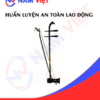
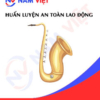



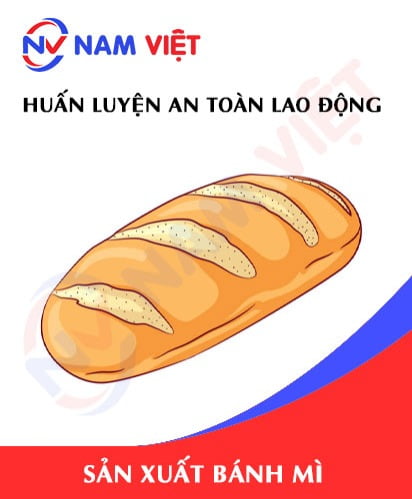

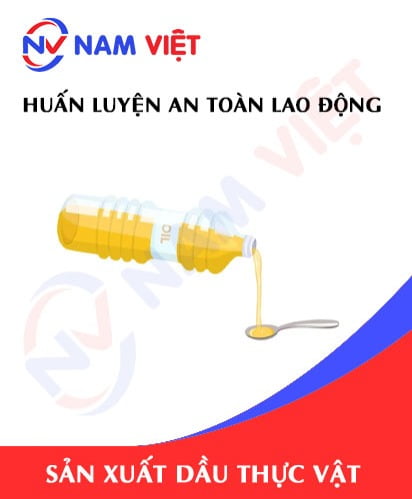


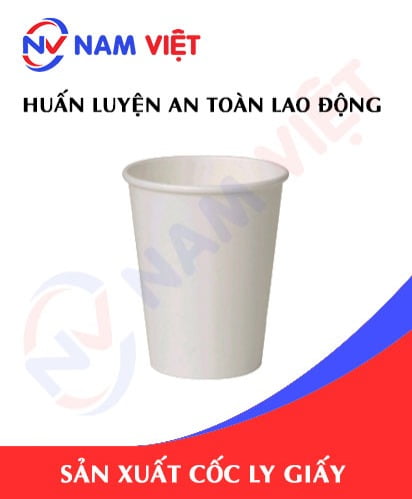

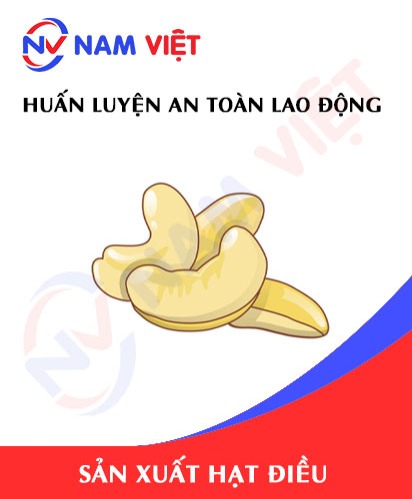
Review Occupational Safety Training for Ukulele Manufacturing
There are no reviews yet.